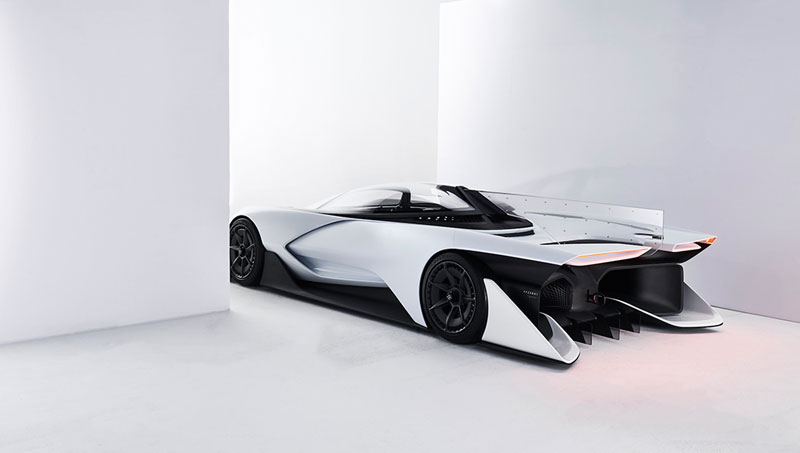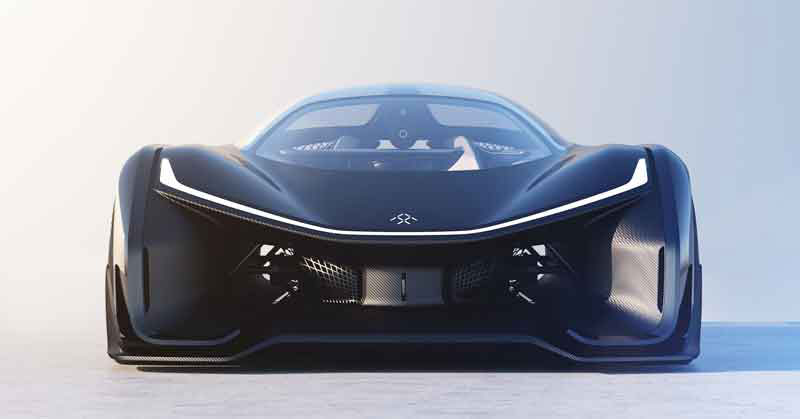Today’s automotive industry is all about change. New companies are constantly battling their way into the limelight by coming up with striking, innovative technologies. OEMs are doing all they can to keep pace, but some are in danger of being left behind.
New vehicle manufacturer Faraday Future (FF) was established in 2014 and has already managed to generate considerable hype, despite having revealed very little about its upcoming product portfolio. At the 2016 Consumer Electronics Show (CES) in Las Vegas, just down the road from the OEM’s new factory, the company decided to showcase a tantalising concept car called the FFZero1 rather than unveiling its first production car, which is scheduled to go into production in 2017. The same concept car made another appearance a few months later at the 2016 Beijing Auto Show.
FF is set on taking an unconventional approach to the automotive industry. Despite its confident concept car programme, a goal of bringing its first electric vehicle (EV) to market in 2017, and the recent opening of a US$1bn production facility in Nevada, it has yet to announce reveal any details about its first car, or even name its Chief Executive. However, the company is adamant that it has a strong and willing team that is more than capable of getting the job done.
In keeping with the changing nature of the automotive industry, FF describes itself as a “tech company rather than an automotive company,” and has said it hopes to churn out products faster and more efficiently than any other OEM has done before.

Megatrends recently spoke to Nick Sampson, FF’s Senior Vice President of R&D and Engineering, about the company’s vision for the automotive world of tomorrow.
Is the FFZero1 a reflection of the technologies that FF believes will be important to the automotive industry over the next, say, 20 years?
Yes, in some ways. As we said at CES, it’s a car of concepts to show some of our visions for the future, though not necessarily quite as far out as 20 years. Much of the technology found in the vehicle is available today, or will be available in the very near future.
In terms of an image for the distant future, there are several factors that will come into play. Autonomous driving is top of the list. These vehicles will include high levels of technology and we will create a seamless environment between the car and the home when it comes to technologies.
Our lives have become very digital. We are increasingly connected all the time, and we will continue to be increasingly connected over the next 20 years. The concept car was positioned to demonstrate an exciting and innovative vision for the future. It’s a symbol more than anything else.
What are the challenges that autonomous driving technologies present to a company like FF?
As the industry moves towards autonomous driving there will be some initial resistance in certain areas against the technology because there’s an inbuilt fear of the robotic world. But I think we will soon get over that. The advanced safety that we get from autonomous driving is such a key aspect, and the industry will soon realise that the cars are more awake and aware than people. The car won’t get distracted by other occupants, or by the phone. It won’t get tired, or carried away with listening to music.
Autonomous driving will also affect ride sharing and will enable a controlled flow of traffic, making urban congestion much lighter. The occupants of such cars may not be the owners, but they need to feel like the cars are theirs. When you log on to a computer, you have a unique configuration with backgrounds and applications. The same will be true for the car. Whether its yours or not, it will have your identity. For example, if you’re half way through watching a movie on television at home, you can get into a ride-sharing car and keep watching it on the way to work.

What will be the impact of rapid urbanisation?
Increasingly compact living conditions will change ownership models for vehicles. As more people are living in urban environments, fewer will have the capacity to store, keep and own a vehicle and if people don’t need to own cars, the space that would be used to store them can be used for other things, reducing the number of parking spaces.
Essentially, we can give back the space to the people. It definitely changes the types of the vehicles we might be trying to produce in the future. If they are shared vehicles, people’s expectations change, and the cost equation also changes.
Does it help to be based in Nevada? Is the state pitching itself as a promoter of automotive technology?
The state is certainly very keen on automotive technology. It is looking to create a number of highways that are ready for autonomous and electric vehicles. The electric highway is already being created, with the state making sure the north and south routes have charging stations in all relevant positions. The Governor also has a passion to create an entire electric drive network – ensuring not only that there is one north-south road, but that the whole general road infrastructure is supportive of EVs.
The state is also really pushing to help autonomous driving technology. It wants to diversify its economy. A place like Las Vegas has a very stereotypical image at the moment, and the state evidently wants to expand it, and show how tech-capable it is.

Does the size of your Nevada facility reflect your confidence for the future?
I think there is clear evidence that the market is in desperate need of the right products from the right companies. We were talking with a potential supplier recently and looking at projections for the future. They laughed and said that the projections would have been optimistic, but they could now be slightly pessimistic.
If Tesla can take 400,000 orders [for the Model 3], and over 100,000 before anyone has seen the product, it really validates our belief that there is huge, pent-up demand for these types of products. We strongly believe that the opportunities are enormous for the right products, at the right price, produced by the right company.
And we are looking at manufacturing with a fresh set of eyes. We’re looking at implementing a very flexible manufacturing approach in our facility in Nevada, but we are also looking further ahead at different sourcing strategies.
Does the future of the company rest on its expertise in autonomous driving technology and connectivity?
FF is not just about connectivity and autonomous driving. Safety, air quality and growing urbanisation – all of these things are becoming more important. Our lives have changed dramatically over the last few years, and will continue to do so in the future. The world is recognising the challenges for reducing emissions and creating a cleaner environment. There are high targets being set for 2030 in almost every country, and there are exceptionally high targets for 2050 as we strive for zero emissions. The automotive industry and the world in general definitely has a big challenge ahead of it with these goals.
Do you have a plan and timeframe for reducing the cost of batteries and other powertrain technologies?
We have a roadmap in our mind as to how quickly we want to drive down the cost of batteries. We have previously dealt with lithium-ion batteries, but we are also looking at other alternatives. The current chemistry used in batteries has advanced dramatically over the past few years, but in terms of battery development as a whole there are several other directions that can be explored. At FF, we are not only looking at what will happen with battery technology in the next five years, but at what it could be like in 20 or more years’ time.
A primary aim for the short-term is driving down the cost of lithium-ion batteries. But we want to keep the architectures of our vehicles open in such a way that other battery technologies and systems are equally applicable.

How important will your variable platform architecture (VPA) be when considering your future portfolio?
Part of our message at CES focused on our VPA, which has been designed to embody different vehicles sizes with different battery, motor and powertrain configurations. It will give us the flexibility to build a large range of very different vehicles in the future, and to build them rapidly.
Where does the company stand on the ICE?
We are really against any hybrid technology that uses gasoline or diesel. We want to be pure electric – that’s our foundation, and that’s where we will stay. But there are a number of different ways to be pure electric, which we are actively exploring. Lithium-ion batteries aren’t the only solution.
Do you believe the automotive industry can be free of emissions by 2050? Is that goal realistic?
I think it’s realistic because we’re still a long way from 2050, and there is a lot of technology available. But it all depends on how the calculations are made. It is not enough for every OEM to exclusively produce battery electric vehicles by 2050, because there are many other elements that must be considered. For example, what happens to the materials when the car comes to the end of its life? Where does the energy come from to recharge? All these things must be looked at, not just the vehicles themselves.
What will that mean for the roles and responsibilities of companies like FF?
We don’t want to become a provider of renewable energy, for example, but we are certainly looking to influence the energy sector to adopt renewable sources. There are plenty of opportunities here, and they need to be leveraged to clean up the environment.
This article appeared in the Q2 2016 issue of Automotive Megatrends Magazine. Follow this link to download the full issue.
